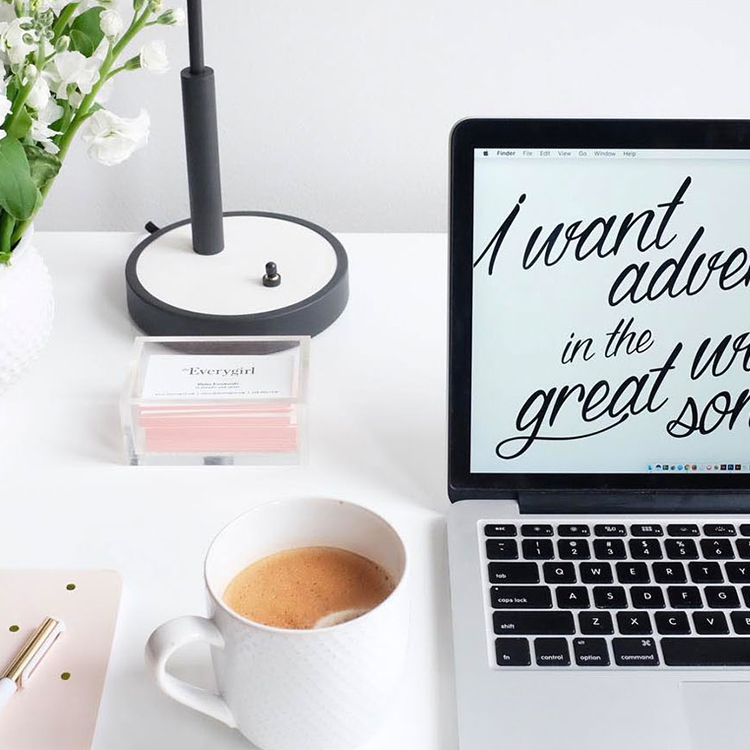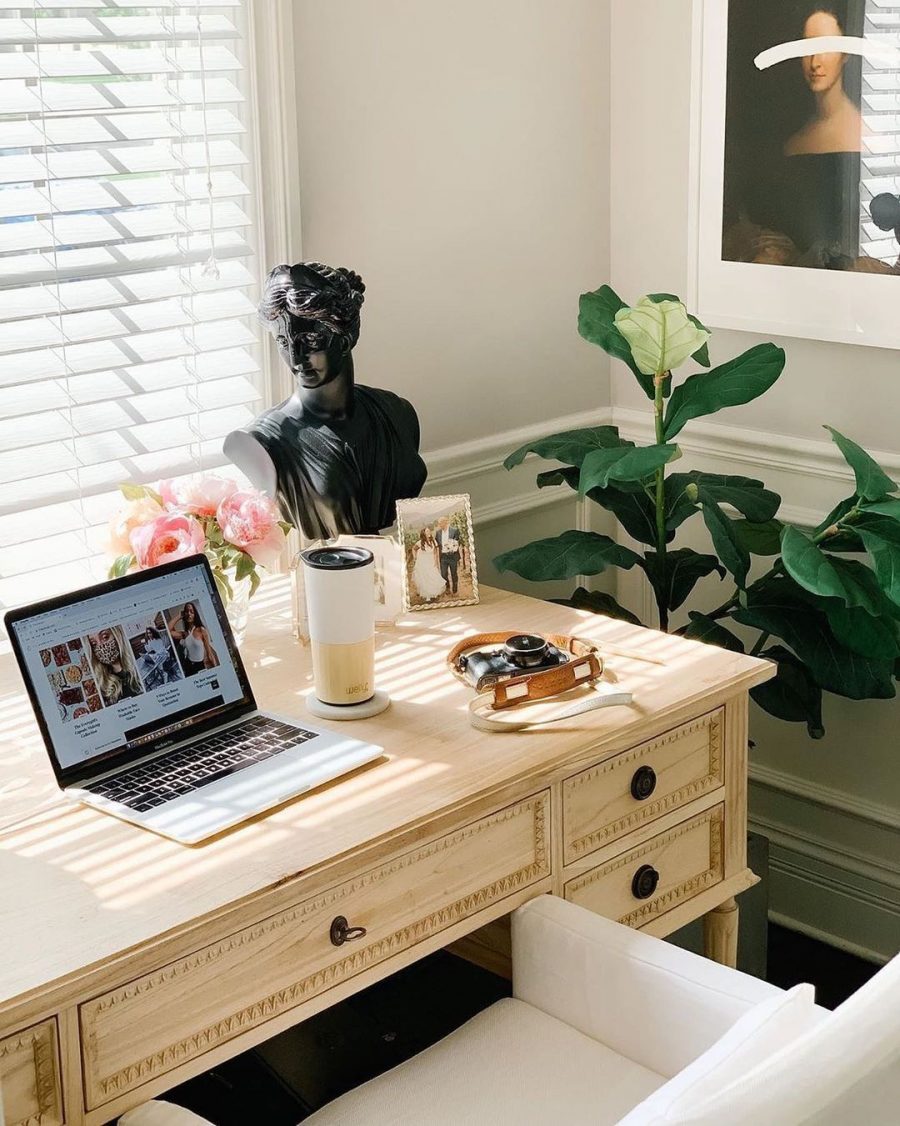
It’s common knowledge that job hunting can be terrifying, overwhelming, and exhausting, but it can also be exhilarating, satisfying, and easier than you think. From those who have unexpectedly lost their jobs to the gals attempting a career change, putting your best foot forward is going to make the job hunt much easier.
1. Update your LinkedIn
This is non-negotiable, and if you don’t have LinkedIn, it’s time to set one up. The basics, like your relevant job history, an eye-catching profile photo, and key competencies, are a great place to start. Update your resume with your latest employment details, even if you have yet to leave (head over to the privacy settings to change settings like allowing recruiters to see that you’re job hunting and turning off profile update notifications to connections).
This is a great time to ask for recommendations from connections and to add in any publications you’ve written, personal website links, and achievements. Don’t be afraid to “link in” with others too and follow companies or topics that are interesting to you—you just might find your next role that way.
2. Tidy up your resume
Although it’s becoming easier than ever to apply online with your LinkedIn profile, you’ll want a stellar resume to back it up. If you’re in the creative field (graphic design, copywriter, social media manager, etc.), designing a visually appealing resume—not just your standard, plain-text Word document—is becoming the norm. Also remember that if you’re in the creative industry, your resume is even more of a first impression to potential employers. The way you present yourself on paper visually and how you choose to write your copy will speak volumes before you even have the chance to shake their hand.
Make sure all your job descriptions are up to date and speak in the past tense (unless you still work there). If you have any gaps in your career, be sure to have an explanation for them. Finally, triple check your spelling and throw it in an online app like Hemingway to help you sound concise. If you have a peer you admire in your field, have them read it over to see if it all makes sense.

3. Read job descriptions thoroughly (then read them again)
Make a list of all the potential job titles you’d be interested in. Then, start searching for these titles on LinkedIn, Monster, and other online job boards, clicking on the jobs that appeal to you, regardless of location, salary, or experience—this is purely an investigation! Take note of the qualifications employers are looking for in this title (Adobe Illustrator? Event planning with a six-figure budget? Three years of fashion editorial experience?) and fine-tune your resume and LinkedIn to reflect these skills. If there’s a software that you’re proficient in that keeps getting mentioned, add it to your resume and profile—do not assume that the potential employer will know you have it.
After reading a few of these, you’ll start to pick up on the language used in your desired industry and will be able to speak directly to your potential employer in your profile and resume. It’s helpful to save a few of your favorites to look back on later when you need some inspiration for your cover letter.
4. Start upskilling
Did you notice a few skills while researching that aren’t in your skill toolbox? No worries, this is where you start upskilling. Pick a skill you’ve been wanting to master that will serve you well in your new career and commit yourself to it. Whether it’s a soft skill like public speaking or a hard skill like photography, there’s a wealth of great online resources to help you every step of the way. You can try places like Skillshare or YouTube to learn just about anything. Remember: Investing the time and money in yourself to upskill is always worth it.
Even if you haven’t mastered the skill by the time you’re sitting down for an interview, you can honestly say you’re learning something new that will help you on the job. Employers will be impressed that you’re taking the time and initiative to teach yourself, and you’ll feel great about answering “I’m learning how to do that” instead of “I don’t know how to do that.”

5. Audit your social media profiles
If you think no one’s checking your social media profiles when you apply to a job, you’re wrong. You can’t unshare posts, photos, or comments, and deleting them won’t erase them from the internet, but what you can do is tidy up the first impression your potential new boss will see when they visit your social media profiles.
Start with your profile photo. Are you gleefully taking tequila shots with friends? Avoid anything that may seem controversial or offensive and stick to neutral, happy shots. I’m not suggesting you devoid your profile photo of personality—after all, this is your social profile—but discretion here may increase your chances of securing the job.
Next, go through your photos and hide any albums or photos that don’t reflect the best version of yourself. This doesn’t need to be done, however, if you decide to keep your whole profile very private. But keep in mind that if you’re searching for a job where maintaining a social profile is necessary, a locked down profile can be a red flag.
Finally, if you have a personal website (maybe you use one as a living portfolio), this is a great time to check that all links are working, content is up to date, and contact information is correct.
6. Network and volunteer
Now comes the fun part! Look on Facebook Local for events in your area that fit your industry, age, or interests, then go to them! Be prepared to talk about your current or past work situation and have a clear idea of what new job you’re seeking out. Be confident and don’t be afraid to meet someone for coffee if they ask—this is how these things start! Putting yourself out into the job search universe and allowing yourself to be known will mean you’re that much more likely to be thought of when a role becomes available.
If you have the free time, volunteering for a nonprofit or cause you believe in is a great way to upskill and network, making it a real double whammy. If you’re a social media manager who loves dogs, offer to help a local rescue with their Facebook and Instagram. If you’re in the human resources field, offer mock interviews to women in shelters. I personally found that volunteering my skills was so rewarding for both me and the organizations I worked with. The nonprofits were happy to let me try different techniques and strategies, and I felt more creative and inspired. This helped me in my own career and also helped the organizations I worked with.
7. Upgrade your interview outfit
We’ve talked a lot about first impressions in these seven tips, and this advice doesn’t stop with the face-to-face meeting. Dressing up is still a definite (even if you know your potential employer wears jeans every day to the office, it’s nice to step it up a notch), and looking smart and polished is key. Investing in a neutral pair of pumps or stylish mules, a basic skirt or pair of pants, and a button-down blouse is sometimes all you need to create the look.
Having a smart leather tote to have a copy of your resume and notebook in will also make you look put together and let you discreetly carry your phone or any other essential belongings. Dressing business or corporate for an interview will leave a favorable impression on any employer.
































